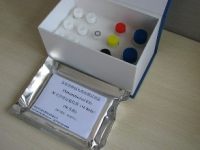Isolation of Foamy Viruses From Peripheral Blood Lymphocytes
互联网
720
The isolation of a retrovirus from peripheral blood lymphocytes/monocytes can be a difficult task, requiring the fulfillment of three essential parameters. First, this viral agent must infect such cells in vivo. Second, these circulating cells should harbor wild-type proviruses. Finally, the viral agent has to express, at least when these cells are cultured in vitro, the structural proteins necessary for the production of viral particles. Foamy viruses (FVs), also known as spumaviruses, are complex retroviruses whose genomic organization has been known since the cloning of the prototypic primate foamy virus type 1. These retroviruses infect most cell lines in culture, but circulating lymphocytes seem to represent their major reservoir in vivo. FV infection leads to the formation of multinucleated giant cells, resulting from the fusion of adjacent infected cells, which present multiple vacuoles giving the monolayer culture a foam aspect. These two features, combined with electron microscopy studies, have helped investigators in their attempt to isolate new FVs. These viruses were described and isolated from different animal species, mostly in nonhuman primates. Here we present the successive steps leading to the isolation of the equine foamy virus from peripheral blood lymphocytes of infected horses.









